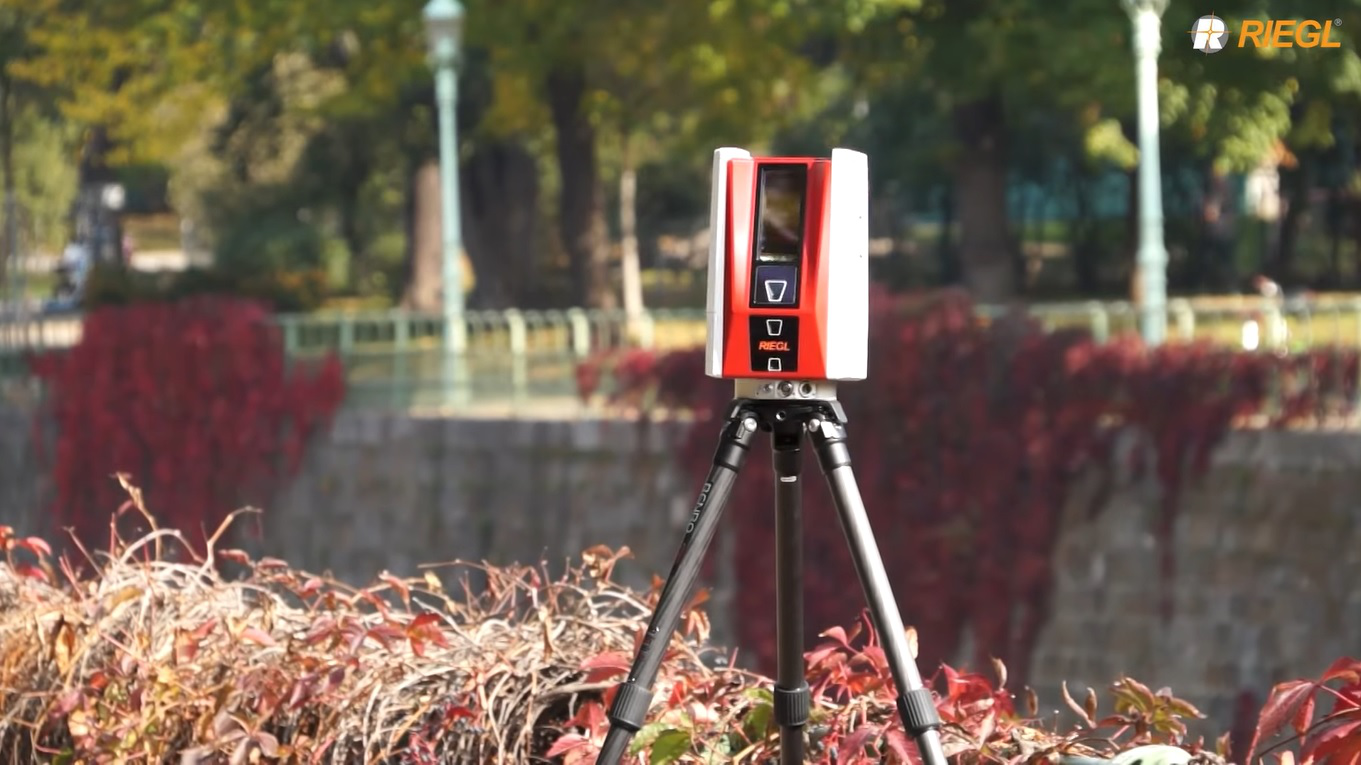The new scanner is a versatile instrument that can be used for applications such as surveying and mapping, architecture and facade measurements, as-built surveying, city modeling and more. It also contains a second processor inside the scanner: the “i” of VZ-i series indicates that it is an integrated system that hosts an integrated second high performance processor that allows the automatic onboard registration of the scan data in the field.
The instrument offers high productivity and versatility: with 3D position accuracy of 3 mm and less than 30 sec scan time for high-resolution scans with 6 mm point spacing at 10 m, this enables more than 60 scan positions/hour with real-time registration. The system weights less than 6 kg (13 lbs), has a 2.2 MHZ Pulse Repetition Rate (PRR), three internal cameras & GNSS integrated, and is prepared for mobile mapping applications.
Scanner Design Decisions to Meet Customer Requirements
In a recent webinar titled “What’s behind the curtain for Riegl Terrestrial Laser Scanners”, Nikolaus Studnicka explained how Riegl was able to meet customer requirements for this recent terrestrial laser scanner release, as well some of the product design decisions that were taken to meet the sometimes contradictory customer requirements.
For example, one customer request was a faster scanner with more FoV (Field of View, or observable area that can be captured from a certain distance). The reason for the request for a full-dome scanner is the desired ability to capture the space above the scanner, while a higher scanner speed enables higher productivity. Studnicka argues that instead of having a full-dome scanner for indoor surveying, a better solution would be more scan positions for fewer scan shadows.
Faster scanning
To meet the requirement for a faster scanner, it was decided to use a rotating multi-facet mirror instead of a rotating mirror, resulting in a rotational speed of 4x100 lines per second instead of 2x100 lines per second in the case of a rotating mirror.
However, the speed of a laser scanner is not only the maximum pulse repetition rate: for high-speed terrestrial laser scanners, both a high pulse repetition rate and a high scanning rate are required. Studnicka suggested that perhaps a better definition of speed is the number of scans per hour (or scan positions).
Accuracy
The VZ-600i has an accuracy of 3mm @50 m or 5mm @ 100m. For the next VZ-i laser scanner generation, the highest efficiency (or maximum laser shots per hour) is calculated for a scan resolution of 34 mdeg, which is 6mm resolution @ 10m distance: compare this to the VZ-400i, that offers a point resolution is 7mm @ 10m distance. The new 34 mdeg scan resolution pattern is called “Panorama_6mm”, to understand better that the scan pattern is connected to the resolution at a 10 meter distance.
Range
The VZ-600i offers a longer maximum measurement range than its predecessor, so that for 99% of the scans, the scanner will operate with its highest pulse repetition rate (PRR), although a different PRR will be available. With the assumption of a 4-facet mirror, a PRR of 2.2 MHz and a scan pattern of 6mm resolution @ 10m (=34 mdeg), the result is a multiple time around zone of 68,1 meters, a required line scan speed of 416 lines per second and a scan time of 25.5 sec (with a 6mm resolution). Ongoing development finally resulted in the VZ-600i having a 2200 kHz laser pulse repetition rate (PRR), a maximum range up to 100-200 m, while choosing another scan rate will result in a range up to 550 or 910 m. The ranging accuracy is 5 mm, the 3D position accuracy is 3 mm @ 50 m, or 5 mm @ 100 m.
A scan time of less than 30 seconds for “Panorama_6mm” can be achieved, which means users can get up to 60 scan positions per hour. If this is not fast enough, the resolution can be reduced: with a 5cm @ 10 resolution, the scan time is 2 seconds instead of 25 seconds with 6mm @ 10m resolution.







